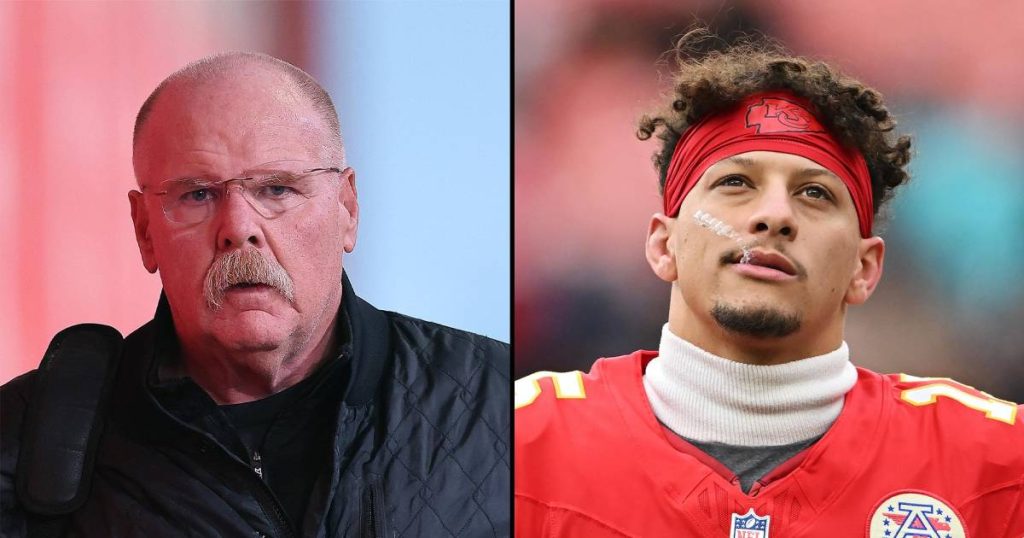The Mahomes Ankle Injury: A Detailed Account
On Sunday, September 15th, during a seemingly routine NFL game between the Kansas City Chiefs and the Cleveland Browns, a moment of high tension gripped the stadium as star quarterback Patrick Mahomes suffered a concerning ankle injury. The incident unfolded in the fourth quarter, with the Chiefs comfortably ahead 21-7. Mahomes, known for his improvisational skills and ability to extend plays, found himself scrambling within the pocket on a crucial fourth down. As he released the ball, a combination of unfortunate circumstances conspired to twist his ankle. Browns defensive tackle Dalvin Tomlinson dragged him down from behind, while simultaneously, defensive tackle Mike Hall delivered a hit from a higher angle. The combined force of these impacts resulted in Mahomes’ ankle being awkwardly twisted beneath him. He immediately went down in visible pain, clutching his ankle, and concern rippled through the Chiefs’ sideline and fanbase alike.
The severity of the injury immediately became apparent, prompting the Chiefs’ medical staff to rush onto the field to assess the damage. After a brief evaluation, Mahomes was helped to his feet, but his inability to put weight on the injured ankle was evident. The gravity of the situation dictated a change at quarterback, and veteran backup Carson Wentz was called upon to finish the game. While the substitution ensured Mahomes’ safety, it sparked a brief but notable disagreement between the star quarterback and head coach Andy Reid. Mahomes, ever the competitor, expressed his desire to remain in the game, demonstrating his unwavering commitment to his team and the pursuit of victory. However, Reid, prioritizing Mahomes’ long-term health and recognizing the comfortable lead, made the decisive call to keep him sidelined.
Reid later explained to reporters that Mahomes "wanted to fight about it," underscoring the quarterback’s competitive fire. However, the coach emphasized the team’s confidence in Wentz and the importance of getting the backup some valuable game repetitions. Reid’s decision also allowed the Chiefs’ other offensive players to familiarize themselves with Wentz’s cadence and calls, a crucial factor should the need arise for him to play extended minutes in the future. Reid further clarified that under different circumstances, perhaps a closer scoreline, Mahomes might have been allowed to continue playing. But given the substantial lead and the risk of exacerbating the injury, the decision to sideline him was deemed prudent and necessary.
Following the game, the sight of Mahomes being transported on a golf cart within the stadium heightened anxieties. However, subsequent evaluations brought a wave of relief – the injury was confirmed as a sprain, not a fracture. While the timeline for his return remained uncertain, the absence of a break was a positive sign. Mahomes himself addressed the media, acknowledging the pain but expressing optimism about his potential availability for the Chiefs’ next game against the Houston Texans. He admitted the adrenaline of the game masked the full extent of the pain, and that a clearer picture would emerge after further evaluation and treatment. He committed to a diligent rehabilitation process, aiming to return to the field as quickly as possible.
Mahomes shed further light on the mechanics of the injury, describing his attempt to extend the play on fourth down. He recounted the feeling of being hit from behind as he released the ball, which combined with Tomlinson’s tackle to cause the unfortunate twisting of his ankle. He admitted that in the immediate aftermath, he tried to stand back up, driven by his competitive instincts, but the pain prevented him from doing so. He also acknowledged that had the game been closer, he likely would have pushed harder to return, but he expressed confidence in Wentz’s ability to manage the game and secure the victory. His praise for Wentz underscored the team’s camaraderie and the trust he places in his backup.
The injury, while undoubtedly concerning, served as a testament to the Chiefs’ depth and resilience. Wentz stepped in admirably, effectively managing the game and preserving the comfortable lead. The defense also played a crucial role, holding the Browns at bay and ensuring the victory. The win improved the Chiefs’ record to an impressive 13-1, solidifying their position as the top team in the NFL. While the immediate focus shifted to Mahomes’ recovery and the management of his ankle injury, the incident underscored the unpredictable nature of professional football and the importance of a strong and adaptable roster. The Chiefs, with their depth at quarterback and a well-rounded team, demonstrated their ability to overcome adversity and maintain their winning ways, even in the face of a potentially significant setback. The incident also highlighted the delicate balance between a player’s competitive drive and the need to prioritize long-term health, a decision that often falls to the coaching staff and medical professionals.

